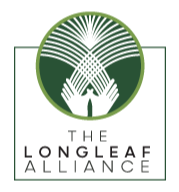Improved Recreational Fishing Through Community-based Oyster Reef Habitat Restoration, North Shore Eagle Point Oyster Restoration - Phase I and II
Oyster beds serve unique roles in estuaries, yet they are highly susceptible to over-harvesting, diseases and pollution. In addition to having both recreational and commercial value, oyster beds provide ecological benefits such as filtration and habitat for numerous species of invertebrates, fish, and plants.
Partner(s): US Fish & Wildlife Service Texas Parks & Wildlife Department
The enlargement of the Houston Ship Channel altered the bay’s salinity regime, presenting an opportunity to extend the area of oyster reefs but the potential for poachers presented a challenge for long-term success. Because oyster harvest within 200 feet of residential piers is forbidden by Texas law, the reefs will be protected so that they can provide larvae for oyster reefs throughout the bay and help maintain clean water for the many species in the ecosystem.
Description of Site:
Approximately 2.5 acres of oyster reef habitat near Eagle Point on the north shore of Galveston Bay.
Problem:
- Overharvesting, disease and pollution reduced oyster populations in the area.
- Hurricane Ike further reduced the population of Crassotrea virginica (Eastern Oyster)
-
Insufficient substrate for spawning and recruitment limited population growth.
Strategy:
- Create an oyster reef footprint of hard substrate using oyster shell, crushed limestone, and/or concrete rubble near privately owned piers.
- Hang plastic mesh bags of oyster shells from piers to collect oyster larvae (spat). Once colonized, deposit on the substrate for growth.
- Involve landowners in reef planning and spat collection to encourage positive conservation attitudes.
- Encourage local monitoring and responsible recreational fishing.
- Construction was completed in September, 2009, and during the first monitoring period two weeks later, spat had started recruiting.
- Residents reported increase in abundance of recreational fish species.
- Phase II of this project focused on encouraging waterfront property owners to maintain oyster gardening and restoring recreational fishing to the area.
Contact Info
- Moni Belton
- TX
- Email: moni_belton@fws.gov
Related Resources & Documents
| Project ID |
|---|




























